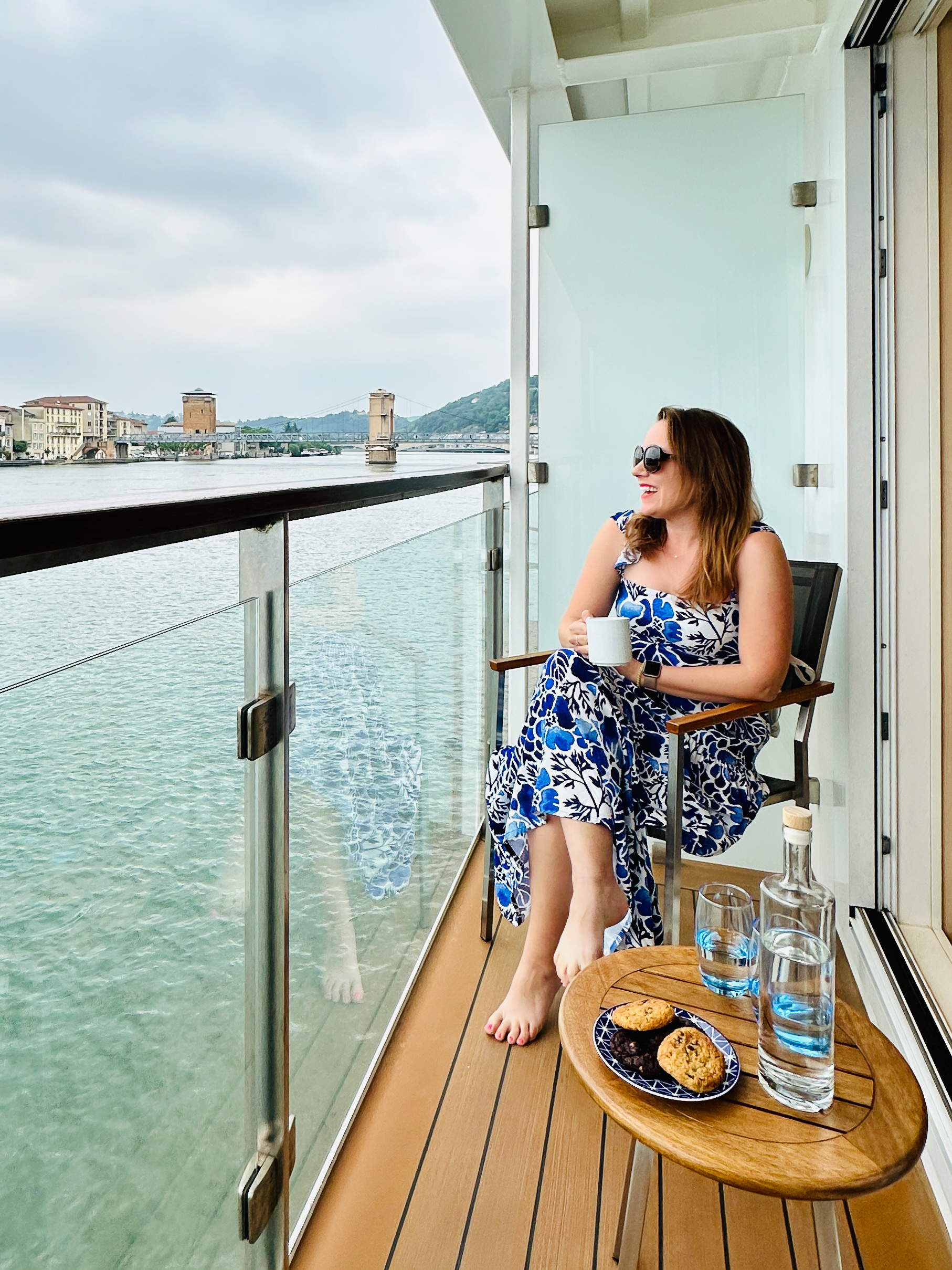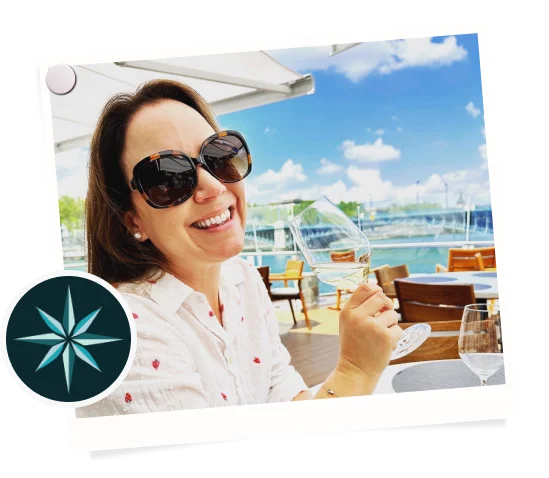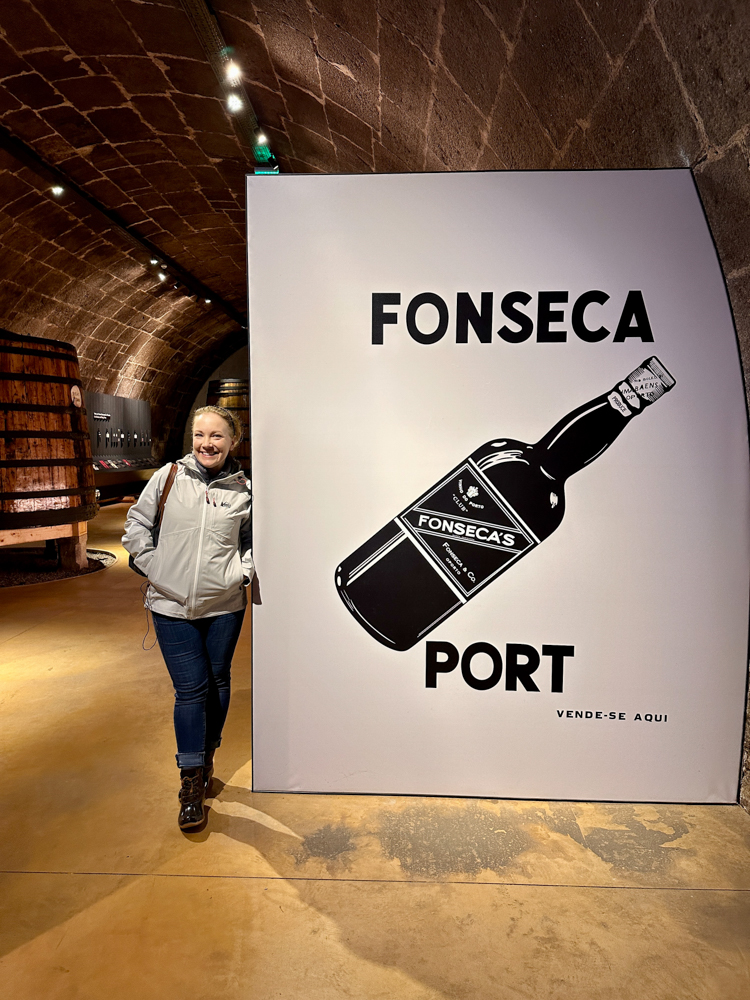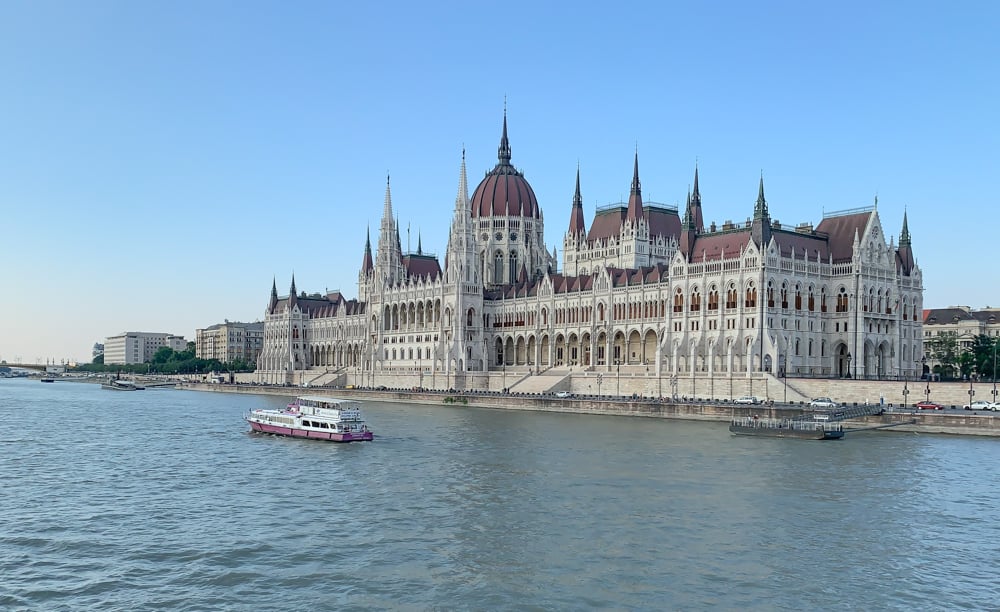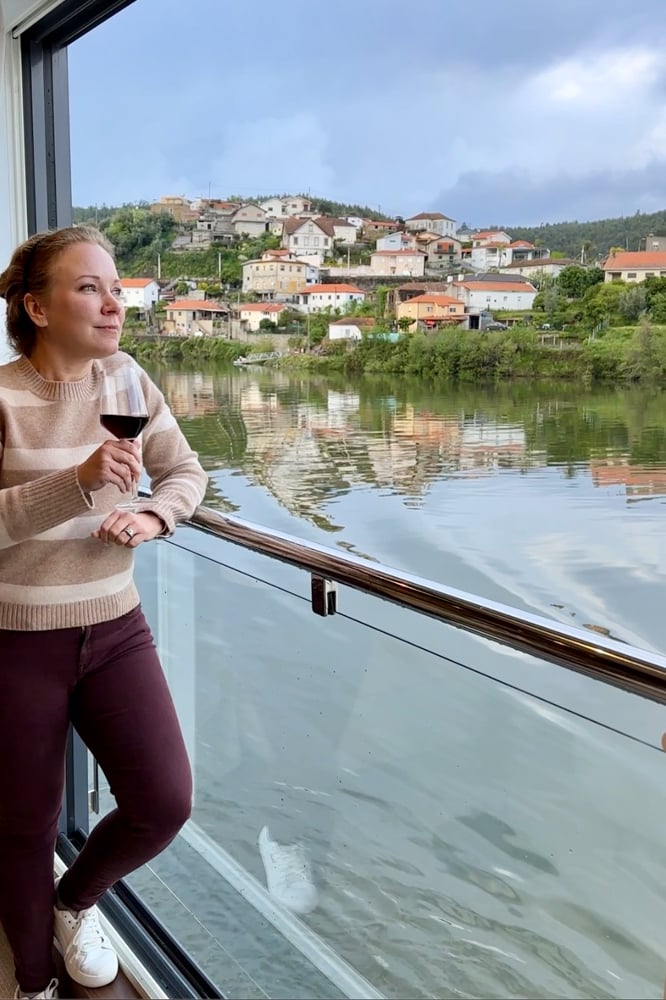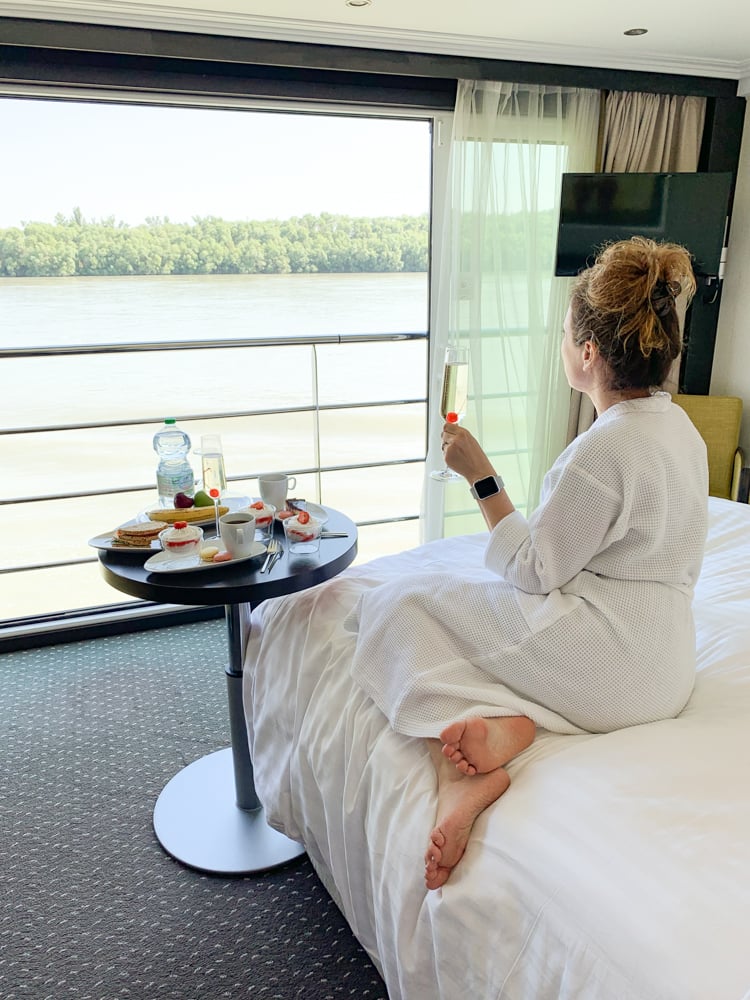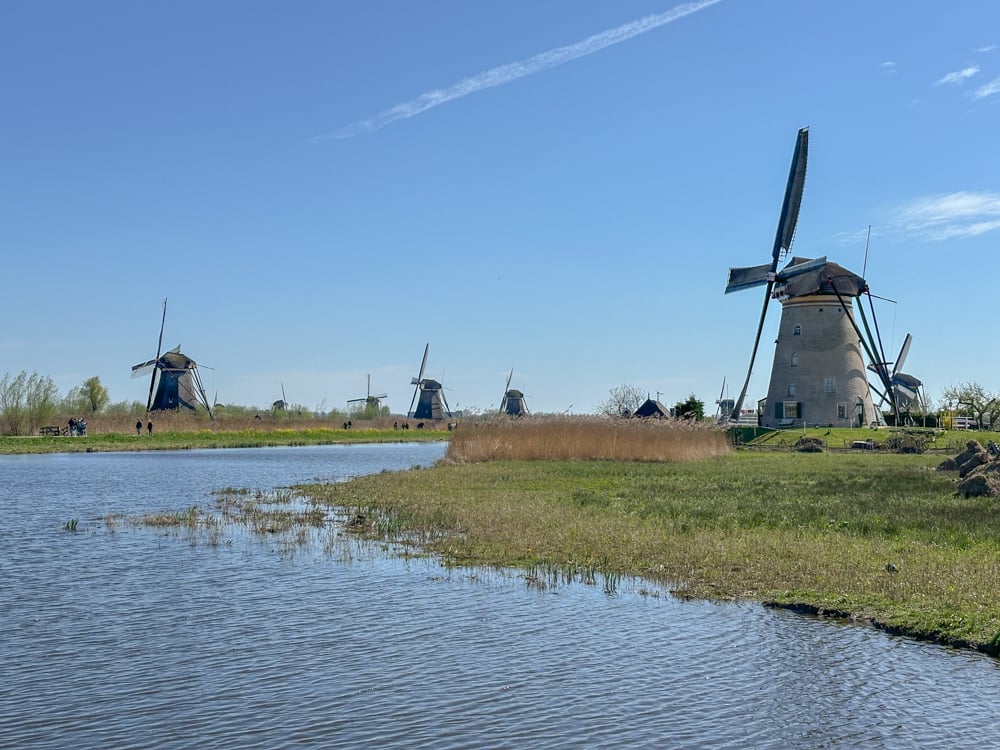Want to ensure you’re perfectly prepared for your river cruise? Sign up for our email list to receive our comprehensive River Cruise Packing Guide, plus expert tips and insights delivered to your inbox.
Whether you’re planning to meander down the romantic Rhine, explore the historic Danube, or discover the charming waterways of France, the key to a truly memorable river cruise lies in thoughtful preparation. I’ve learned from both perfect moments and minor mishaps on my own cruises, and I’m excited to share what truly makes a difference for first-timers! Here are our tips for your first river cruise.
1 – Packing Strategically
River cruising calls for a different approach to packing than ocean cruises or resort vacations. Smart casual clothing that can be layered is absolutely essential. Think versatile pieces that can transition effortlessly from daytime explorations to evening dining.
Unlike ocean cruises, formal wear isn’t necessary (goodbye, tuxedos and floor-length gowns!), but you’ll definitely want a few dressy-casual options for special dinners and cultural performances. Men will be comfortable with slacks and button-downs or polos, while women can opt for nice pants or skirts with tops or casual dresses.
Consider the season carefully. European weather can be wonderfully unpredictable, particularly in spring and fall. I’ve experienced bright sunshine and chilly rain on the same April day in Porto! A lightweight waterproof jacket with a hood is worth its weight in gold, as are scarves that can add warmth or style to your outfits.
Storage space on river ships is efficiently designed but definitely limited compared to ocean liners or hotels. Choosing pieces that can serve multiple purposes will help you avoid overpacking. I typically pack clothing in neutral colors with a few colorful accessories to create different looks without filling my suitcase to bursting.
Pro tip: Pack a foldable duffel bag in your suitcase for any treasures you might acquire along the way. Those charming Christmas market finds or local wines have a way of multiplying! I usually check my bags on the way home, and carry-on my souvenirs.
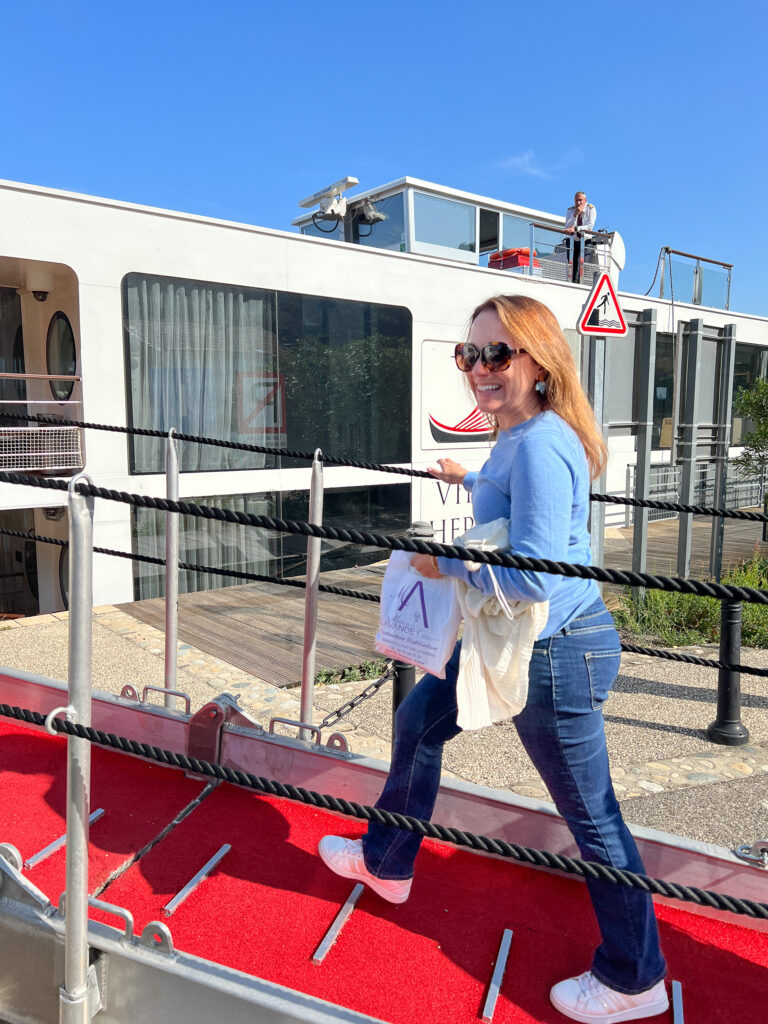


2 – Footwear Fundamentals
I cannot emphasize this enough: comfortable walking shoes aren’t just a suggestion, they’re absolutely essential for river cruising. European cities, with their charming cobblestone streets and historic stairs, will punish impractical footwear choices without mercy!
Pack at least two broken-in pairs for alternating days (your feet will thank you), plus one dressier option for evenings. Breaking in new shoes just before your trip is a recipe for blisters and frustration and wear them for several weeks beforehand if possible.
Water-resistant shoes can be invaluable, especially in spring or fall when showers are more common. I typically pack a pair of white sneakers for dry days, and a pair of comfortable flats, such as Rothy’s, which can double as slightly dressier evening options while still being comfortable enough for exploring.
For spring and fall cruises, I’ll swap one of the sneakers for a comfortable rain boot like Sperry or LL Bean Duck Boots. Also consider what excursions you’ve planned, too. If you’re hoping to hike in the Black Forest or bike along the Danube, factor in appropriate footwear for these activities.


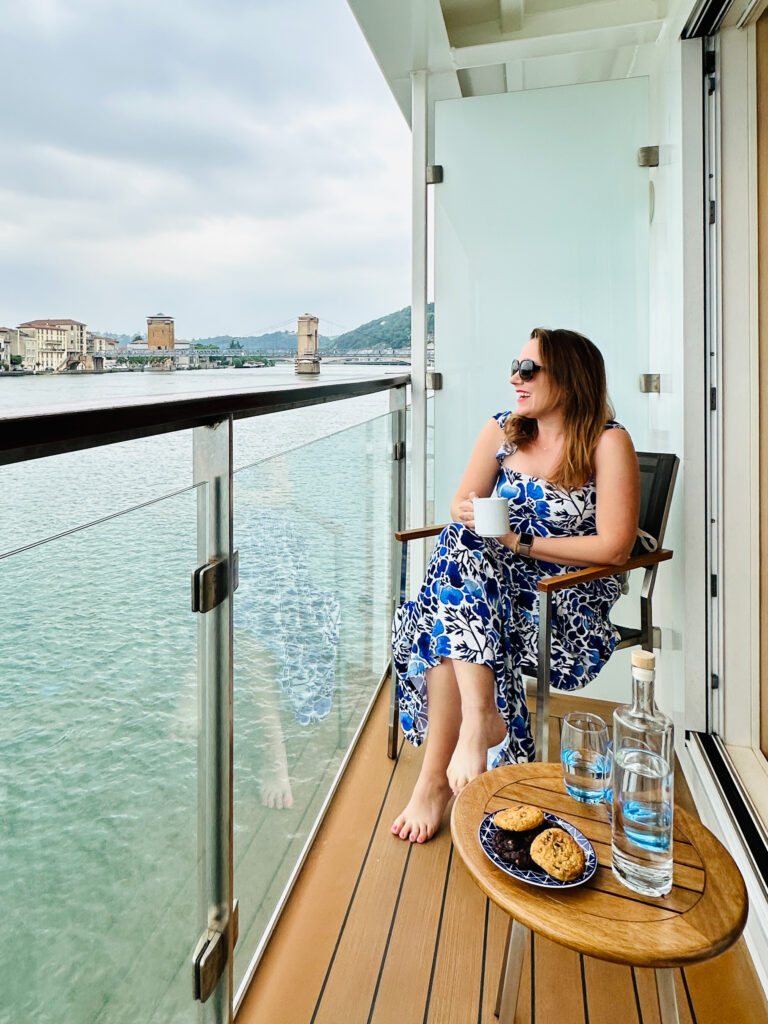
3 – Research Enhances Your Experience
Taking time to research your ports of call beforehand enriches your journey immeasurably. (Be sure to check out our Port Guides for each river!) Reviewing these options before departure helps you make informed choices about how to spend your limited time in each destination. Be sure to check out our blog where we review popular river cruise excursions and food and drink tips too!
Consider balancing guided tours with free time for wandering. While guided excursions offer valuable insights and historical context, some of the most magical moments often happen when you stumble upon a local festival, a charming café, or a beautiful viewpoint during unstructured exploration time. Research also helps you identify special sites or experiences you don’t want to miss during free time. Maybe it’s a hidden café known for the best pastries in Vienna, a special viewpoint in Budapest, or a local market in Provence. These personal discoveries often become favorite memories. Bring a lightweight journal or digital “inspiration file” with notes about places or experiences that interest you in each port, without building a rigid schedule that might cause stress if plans change.
Decide which included excursions are most aligned with your interests, and which destinations might warrant upgrading to a premium excursion for a special experience. For example, a basic city tour might be sufficient in one port, while a culinary experience or concert might be worth the splurge in another.
Also review the activity levels of excursions carefully. River cruise companies typically rate them from easy to active. This helps ensure you’re comfortable with the pace and distance involved, especially for walking tours on uneven surfaces. If you’re traveling with a companion whose interests or mobility differ from yours, don’t hesitate to occasionally split up for different excursions. This allows each of you to enjoy according to your preferences and creates more varied experiences to share over dinner.

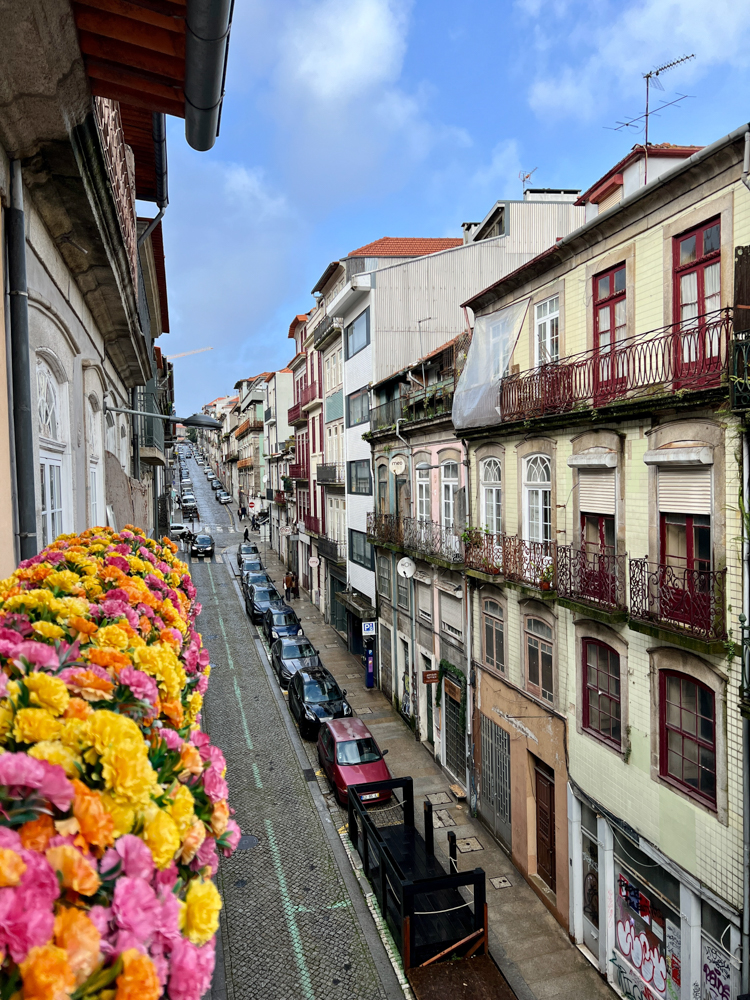

4 – Early Arrival Advantages
Arriving a day or two before your cruise begins is more than just a buffer against travel delays, it’s an opportunity to begin your journey refreshed and oriented. This extra time allows you to adjust to the time zone, explore your embarkation city without rushing, and start your cruise feeling energized rather than jet-lagged.
Many cruise lines offer pre-cruise hotel packages that make this extra day seamless and worthwhile. These often include transportation to the ship and sometimes a city tour. But we’ve also booked our own pre-cruise travel too, which can allow you to choose specific neighborhoods or hotel styles that suit your preferences.
Use this time to experience the embarkation city’s highlights, giving yourself permission to move slowly and adjust to vacation pace. When everyone else is arriving frazzled from overnight flights, you’ll already be settled into the European rhythm and ready to fully enjoy day one of your cruise.
As a bonus, in the unlikely event of luggage delays with airlines, this buffer gives your bags time to catch up with you before the ship departs. After a close call with delayed luggage in Amsterdam, I now always pack essentials in my carry-on, including a change of clothes and any must-have medications.
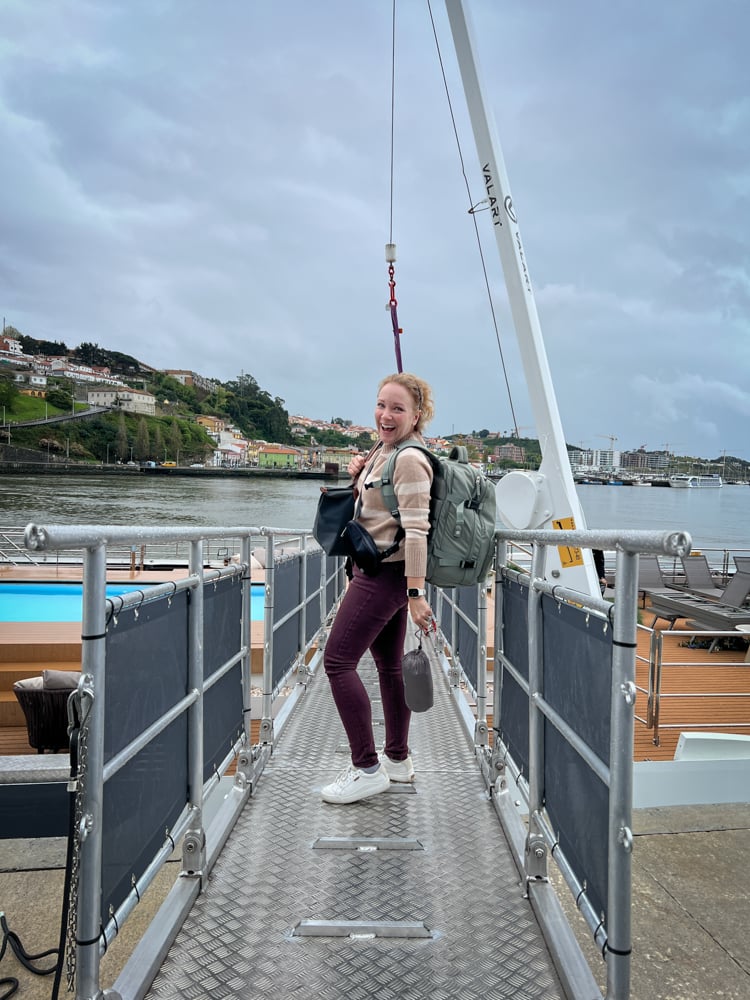
5 – Cultural Preparation
A basic understanding of local customs and etiquette goes a long way toward meaningful cultural exchanges. River cruises often visit multiple countries in a single week, each with their own subtle cultural differences.
Learn a few simple phrases in the languages of countries you’ll visit, such as “hello,” “thank you,” and “excuse me.” Locals genuinely appreciate the effort, even if your pronunciation isn’t perfect. Most cruise directors will also share these phrases during briefings, which is a helpful reminder when visiting multiple countries on a single river cruise.
Research dining customs (like longer, more leisurely meals in France), tipping expectations (often different than in North America), and basic etiquette for the regions you’ll visit. For example, in many European countries, keeping your hands visible on the table rather than in your lap is considered polite during meals.
Cultural preparation also means adjusting expectations around service styles, portion sizes, and pacing. European dining and service often moves at a more relaxed tempo than Americans might be accustomed to. Embracing these differences rather than comparing them to home standards helps you appreciate authentic experiences.
Overall, I’ve found that a smile, patience, and those few basic phrases opened many doors to wonderful conversations.
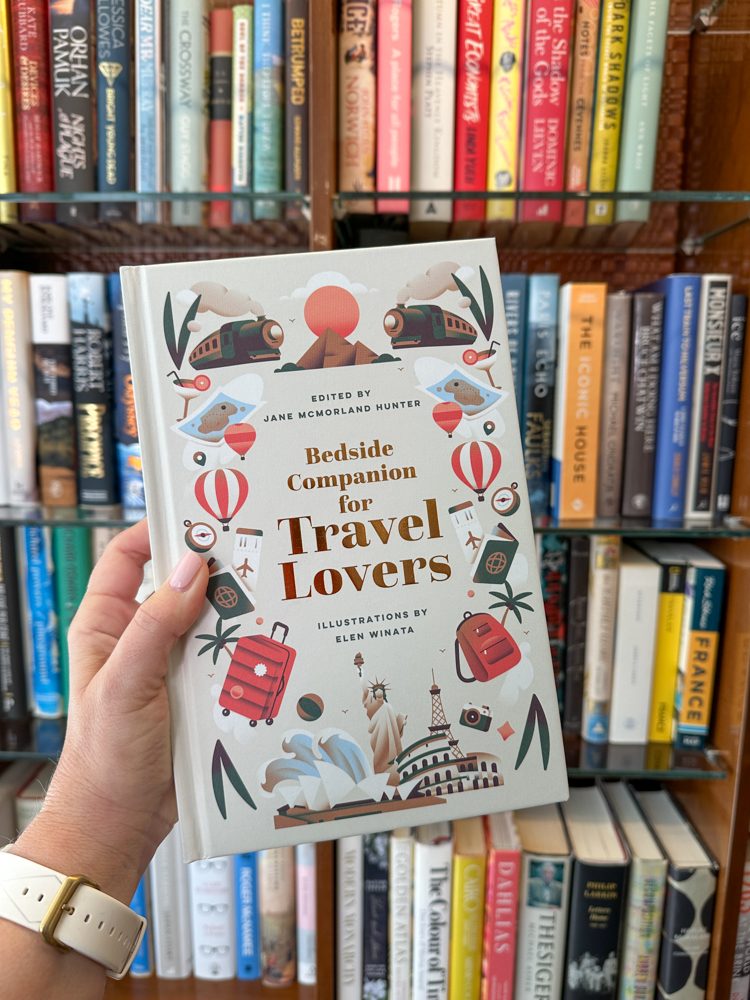


6 – Health and Comfort Considerations
River cruising tends to attract travelers who value experiences over amenities, but that doesn’t mean sacrificing comfort! Consider any specific health needs or medications, and ensure you have adequate supplies for your journey plus extra days as a precaution. Getting prescription refills abroad can be complicated.
Check with your healthcare provider about any necessary vaccinations or health precautions specific to the regions you’ll visit. Discuss how to handle any existing health conditions while traveling, and consider carrying a basic doctor’s note for any prescribed medications.
Pack any preferred over-the-counter medications, as familiar brands might not be readily available in Europe. I often keep a small bag of our preferred over-the-counter cold remedies, pain relievers, and digestive aids as a “just in case” packable medicine cabinet. This has saved many a day when minor travel ailments threatened to interfere with sightseeing.
Don’t forget other comfort items like compression socks for the flight, insect repellent (I got eaten alive by mosquitos one summer on a Danube cruise) if traveling in summer months, and any specific personal care products you can’t do without. While European pharmacies are excellent, searching for exact equivalents of your preferred products can consume precious vacation time.
Consider purchasing travel insurance that includes medical coverage abroad. Most domestic health insurance plans offer limited coverage outside your home country. The peace of mind is worth the investment, especially for river cruises that visit multiple countries.
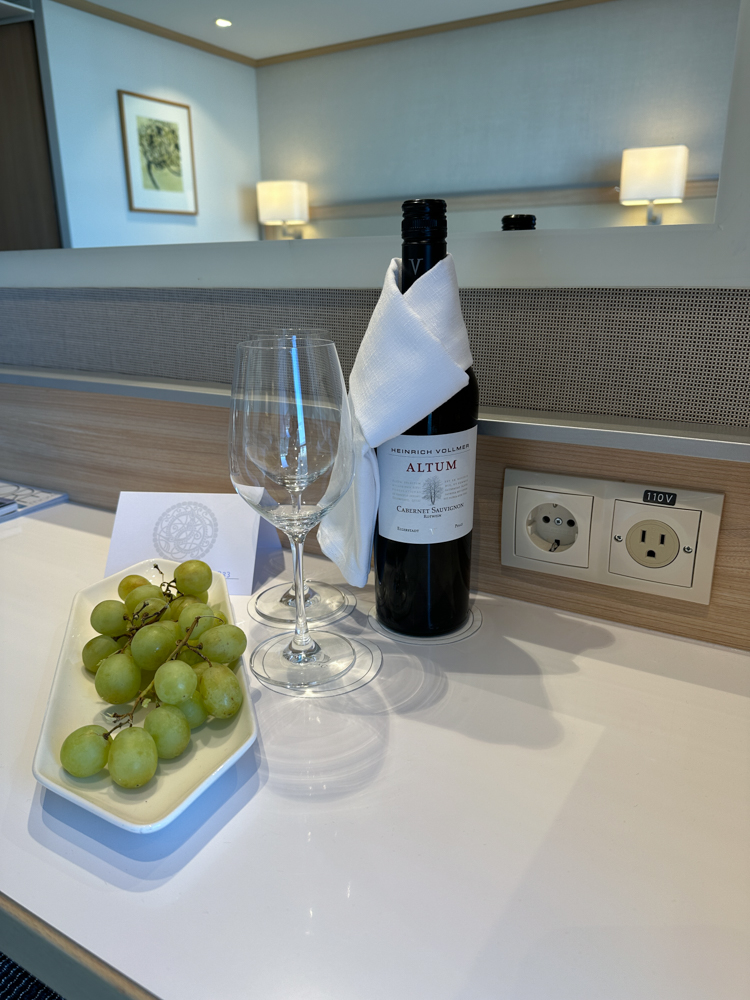

7 – Electronics and Documentation
Ensuring your connections to both home and your destinations run smoothly requires some advance planning. Start with proper adapters for European electrical outlets. I recommend bringing at least two as they’re easy to accidentally leave plugged in at hotels or in public charging stations. Though, most cruise ships have usb and regular American-style power plugs. But you’ll need these adapters for your stay in hotels either before our after your crusie.
Consider bringing a portable battery pack for long days of sightseeing when you might be taking lots of photos or using navigation apps. Having backup power during shore excursions prevents the disappointment of a dead phone battery just when you spot the perfect photo opportunity.
Make physical and digital copies of important documents, including your passport, travel insurance, and cruise documents. Store digital copies in a secure cloud service you can access from any device, and leave a set of physical copies with someone at home.
Download offline maps and language apps for the regions you’ll visit. They can be lifesavers when you want to explore independently during free time, especially in areas with spotty WiFi. Google Maps allows you to download regions for offline use, and apps like Google Translate can work without data for basic translations.
Check with your mobile phone provider about international plans or consider a travel eSIM for affordable data access abroad. Being able to use navigation, translation, and communication apps without worrying about enormous roaming charges adds convenience to your journey.
Ready for your adventure? Want more tips for your first river cruise? Don’t forget to subscribe to our email list for your free River Cruise Packing Guide. This comprehensive resource includes:
- Detailed packing lists
- Expert tips for packing
- Pre-departure tips
- What to pack in your carry-on bag
Plus, you’ll receive our monthly newsletter filled with river cruising insights, destination guides, and exclusive travel offers too!

